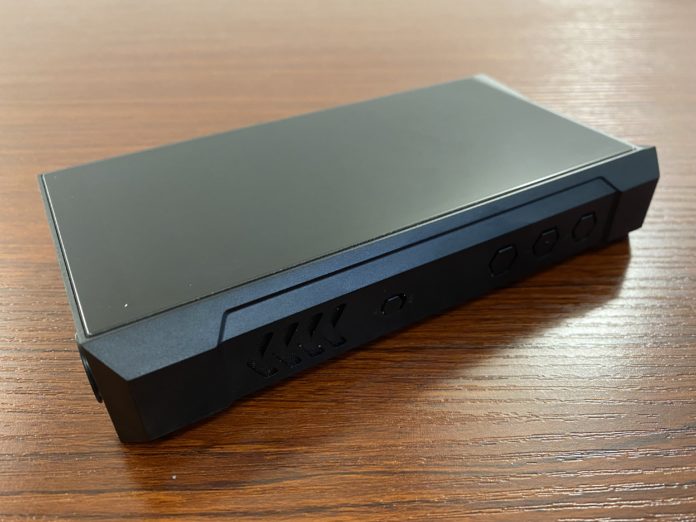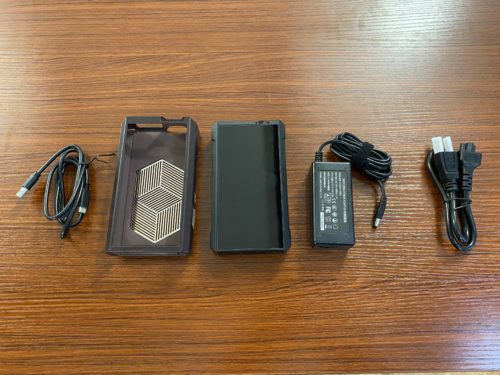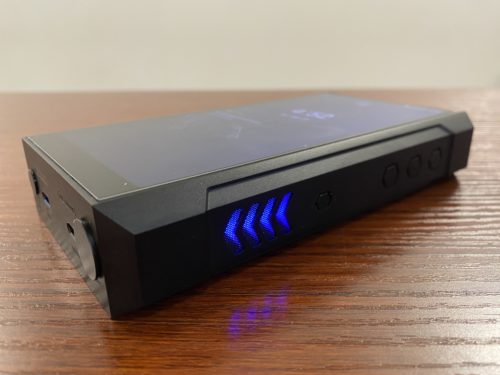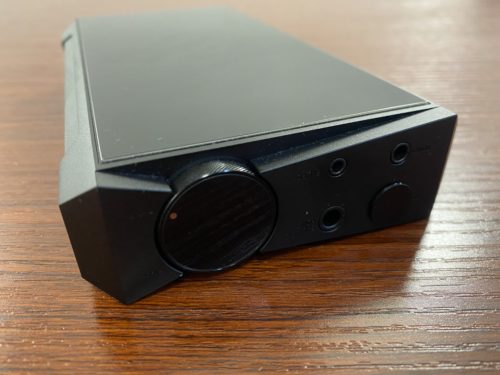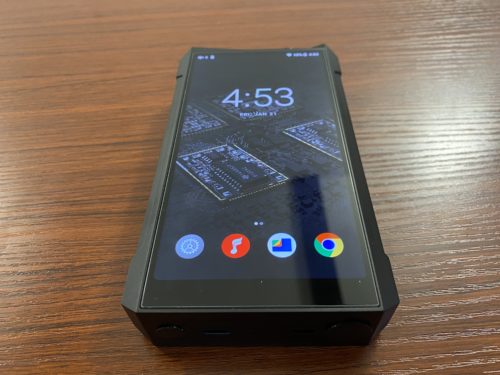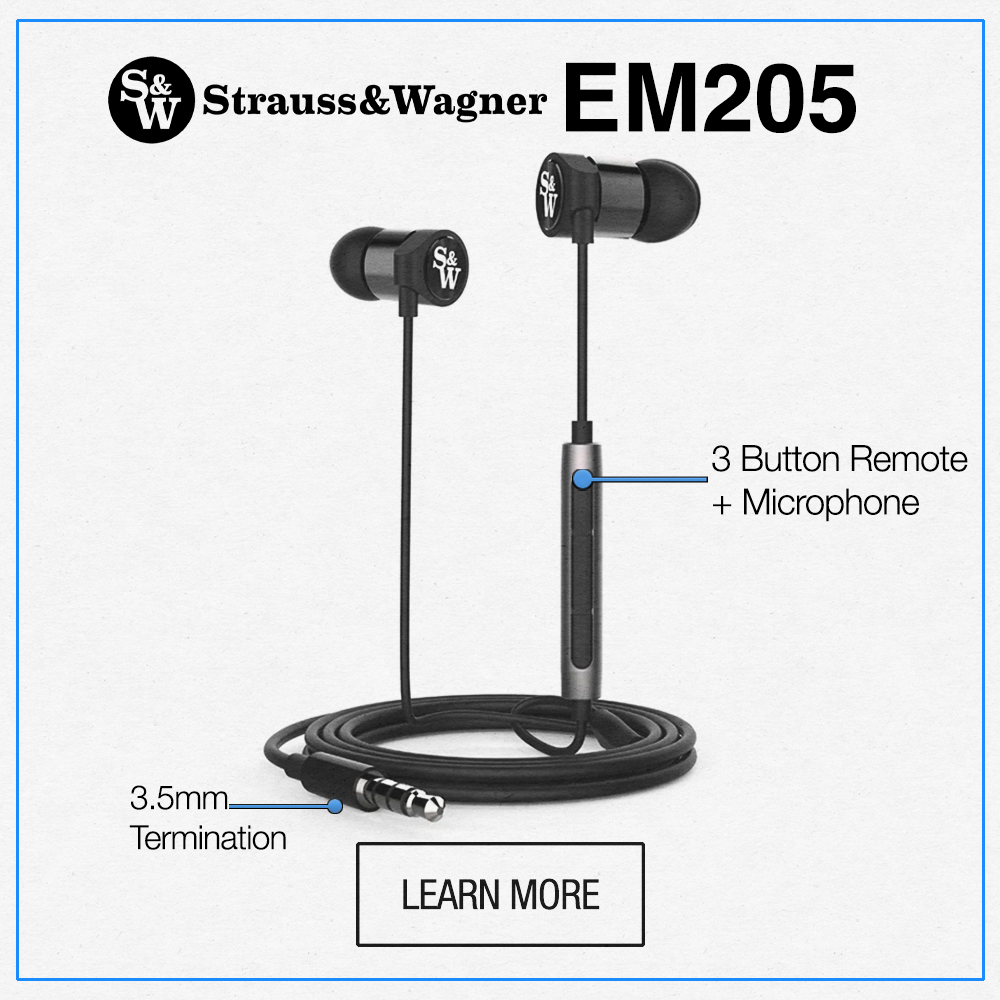It wasn’t that long ago when I reviewed the Fiio M11 Plus LTD, a digital audio player that I felt was one of the better entry-level devices to introduce. Audiophiles on a certain budget could enjoy a high-resolution audio player for less than a thousand dollars, with similar features and build quality compared to that of some flagship systems available today. Now with the M17, we’re dealing with the other end of the spectrum. This is a $1,799 music player that contains one of the beefiest interiors that I’ve seen yet with dual power supplies and THX integration. Do all of these components make the M17 worthwhile?
What You Get
- Cooling stand with fan
- External DC adapter
- Leather case
- PET screen protector with an oleophobic layer
- micro-SD card ejector pin
- USB 3.0 data and power cable
- Aluminum dust plug
Build
At first glance, the M17 looks like one of the largest audio players around. The length and width of the screen combined with a chunky stainless steel chassis will have you question if this device is as portable as the rest of its competition. Especially when considering the more weighty feel of the player in your hand brings in some significant questions. What the M17 makes more present out of any DAP on the market is that this is effectively a condensed computer in your hand. However, this isn’t just any computer, but that of a custom-made PC using some of the best parts available. It even has glowing LEDs on the sides.
With a build like this, you may be wary about taking the M17 out and about on daily commutes or public transportation. Even though it’s certainly possible to strictly use this as a portable music player, you may find better use treating the M17 like a desktop DAC/amp and keeping it in a room or at work. Everything about the style of the player, from its many ridges and tough surfaces, makes the M17 a hefty but durable system. Aside from the added weight, it doesn’t feel that unnatural to hold either. The mirrored surface on the back is also quite striking, displaying a unique aesthetic that’s hard to replicate.
Ins and Outs
On the M17, you have a few connection options laid out on the top and bottom end of the device. Starting with the bottom, you have a couple of different ports worth noting, such as the DC power input underneath a dust cap that you can use instead of operating the system with a battery, which is great when you’re just sitting with the M17 at home or at work and you want to use it for as long you wish. You also have ports for USB-C 3.0 and USB-C host for DAC connections or hard drive storage. A small socket for micro-SD cards can be seen above the USB-C 3.0 socket. You will need the ejector pin to insert it. The top of the player is where you’ll see all of your headphone inputs, as well as the volume dial that is robust and feels nice to use in your hand and on its back. Here, you’ll have every connection you can ask for in a DAP, including 3.5mm PO/LO, 2.5mm balanced, 4.4mm balanced, and even quarter-inch, rare for many audio players.
Design
For the M17, it’s all about the interior design, as this DAP puts the AMP in DAC/amp. The real main course here is the dual THX AAA-788+ headphone amp built inside of the device. This desktop-class amplifier significantly increases power output by 225% up to 3000mW per channel, making the possibility of driving even the most power-hungry headphone all the more plausible. Along with the amp, the M17 possesses dual ES9038PRO DAC chipsets, with both left and right channels supporting eight parallel outputs for little to no noise interference, and extended resolution. Other internals includes an NDK femtosecond crystal oscillator which helps reduce jitter and a 470mF DMF supercapacitor that gives the M17 such a huge power supply. For the interface, the M17 is powered by a Qualcomm Snapdragon 660 that gives the device access to many third-party apps through Android 10. An XMOS receiver chip also helps with ultra-low latency and supports up to DSD512 and 32bit/768kHz.
Sound Impressions
There is so much to dive into when getting into the sound signature of the M17. From my first test track to the last, this DAP continuously surprised me with its various abilities. The way that the M17 shapes its output is wholly unique to this particular system, thanks in part to the meaty DAC/amp combo it wields underneath the surface. Part of what makes this unit particularly special is its emphasis on the actual amplifier part of the device. I would expect nothing less out of dual THX desktop-class amplification, but it significantly affects every single characteristic of timbre and spatial imaging to the point where it’s almost impossible to ignore it. The way that the frequencies reveal themselves with not only exquisite detail, but the drive to back those details and showcase them with ferocity and transparency makes this quite the powerhouse of a system. When I hear my music coming through the M17, it becomes easy to forget that you’re not listening to a high-class amplifier, but a DAP with the capabilities of one.
Soundstage
It’s remarkable what an increase in power can bring out, especially when dealing with the soundstage of some headphones. Treating the M17 like a true amp, I mainly tried to test what it could bring to more power-hungry headphones, I started with the Final Audio D8000 Pro and the results were immensely satisfying. With open-back headphones, you usually get a good amount of separation, with perceivable air between sound elements. What the M17 does is fill those spaces with a considerable amount of drive to make instruments fuller and vocals more commanding presence. Elements appear in the sound field like they’ve been widened and lengthened, adding more solidity to the image. This doesn’t subtract any clarity or depth, rather it presents its sonic environment with an almost cinematic feel. Nothing will ever come across as light or delicate, instead opting for a richer output that still stays true to the headphone’s timbre and localization.
Low End
With power being one of the key themes to the M17, the bass response is destined to stand out. On some of the over-ear headphones, I tested like the D8000 Pro and the Beyerdynamic T5, the bass was a lot more impactful. You can feel the power of the bass protruding through the frequency response without clouding any of the other frequencies with its resonance. The timbre is always balanced while not being afraid to showcase grand vibrations and punchy details that make the bass come alive. Its tone takes a consistently complete shape, engrossing you in a feeling of low-end clarity that provides magnificent texture and subtle warmth. Listening to the Moondrop Variations through the M17’s 4.4mm balanced connector proved to be a deeply satisfying experience, as this pairing brought out the lows with even more dominance, shaking me to my core. Here the resonance pulsated outward, affecting the air around me, and sub-bass was climbing up my throat.
Mids
Many details can be easily heard in the midrange of the M17’s sound signature, but its coloration isn’t as fun as the lows. Instead, the mids present a full body of tone, featuring revealing instrumentation and vocal performances that leave nothing about the fidelity behind. Sometimes this means highlighting characteristics of the frequency response that you may rather have smoothed out compared to these details that feel like they come out and bite you. Nonetheless, this sound signature made for great pairings with more reference headphones that place more stock in purity than texture. It helps even out the coloration of the low-end by having this incredibly transparent midrange that compares in gain, but tonality separates itself from the rest of the response.
Highs
The high-mids and upper-treble also stand out considerably in certain mixes, showcasing a certain amount of shine and prominence without delving into the harsh or piercing territory. There is a specific ring to the highs that sound unique, giving the timbre not only a colder, more metallic feel, but one that’s also descriptive about the music you’re listening to. Many times throughout my testing, I would hear a subtle high-frequency chime-like sound coming from what felt like overhead. This detail could be mostly perceived in orchestral recording and film scores, where artifacts from the mix could be more clearly stated. At times I can be a fan of this type of response, and this is one of those times.
Summary
It’s no secret by now that the Fiio M17 is an exceptionally powerful audio player with a design that rivals that of the best currently on the market. Having used the device myself for many hours, I believe it to be one of the best. The dual THX amps are unmatched in any DAP available today, and the effect it has on the sound with many different headphones and IEMs is more significant here than on any other system I’ve tried. I believe the M17 to be one of the best all-in-one pieces for audiophile listening you can have, combining the power of a high-class DAC/amp hybrid, and combining it with one of the finest audio players around.

The Fiio M17 is available at Audio46.
Compare the ranking of various headphones, earbuds and in-ear monitors using our tools.
Discuss this, and much more, over on our forum.
---MAJORHIFI may receive commissions from retail offers.


